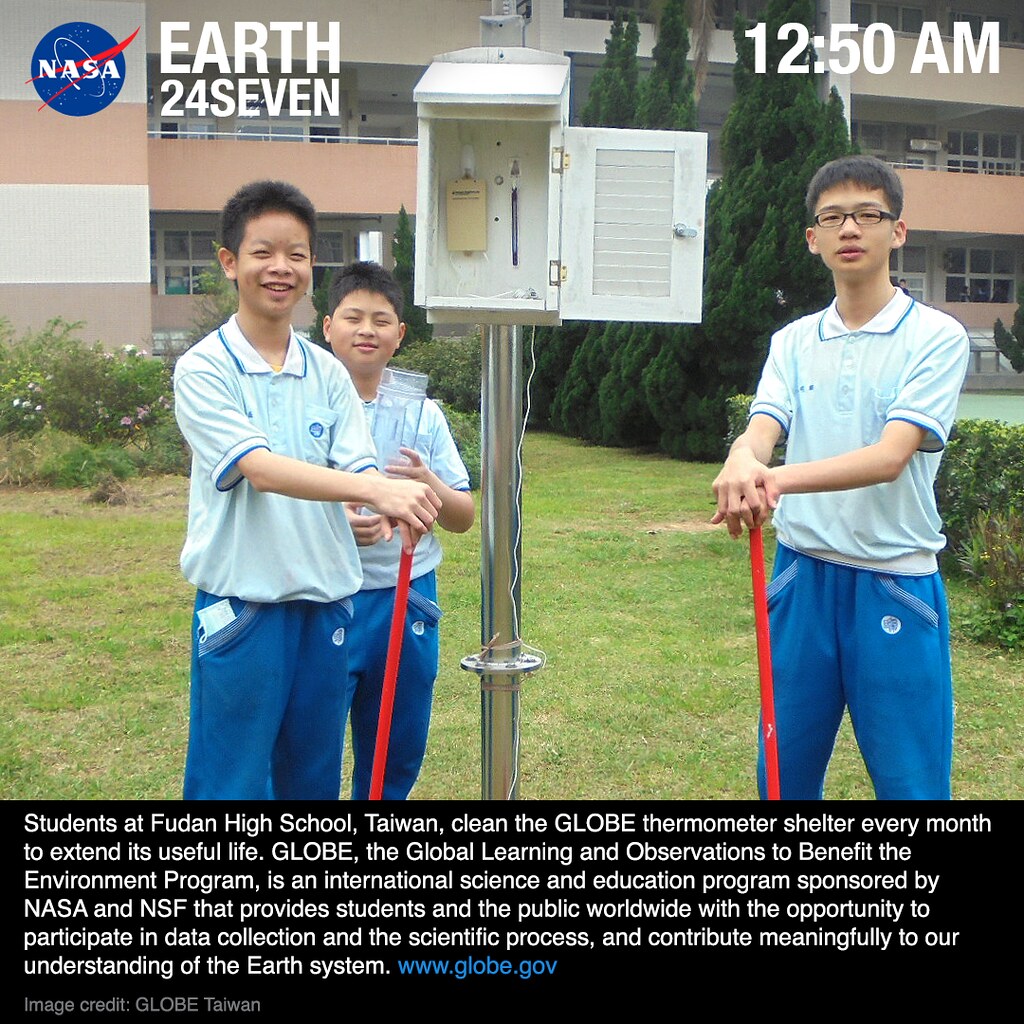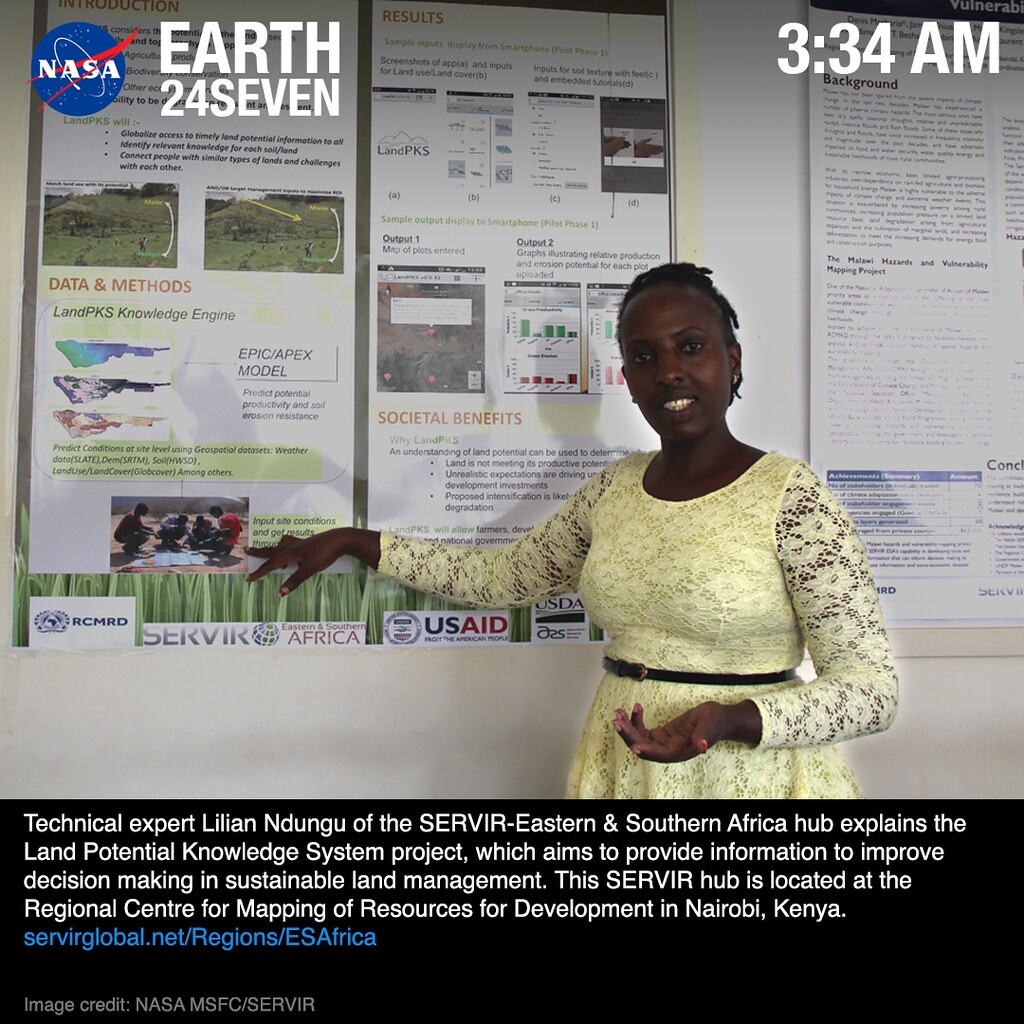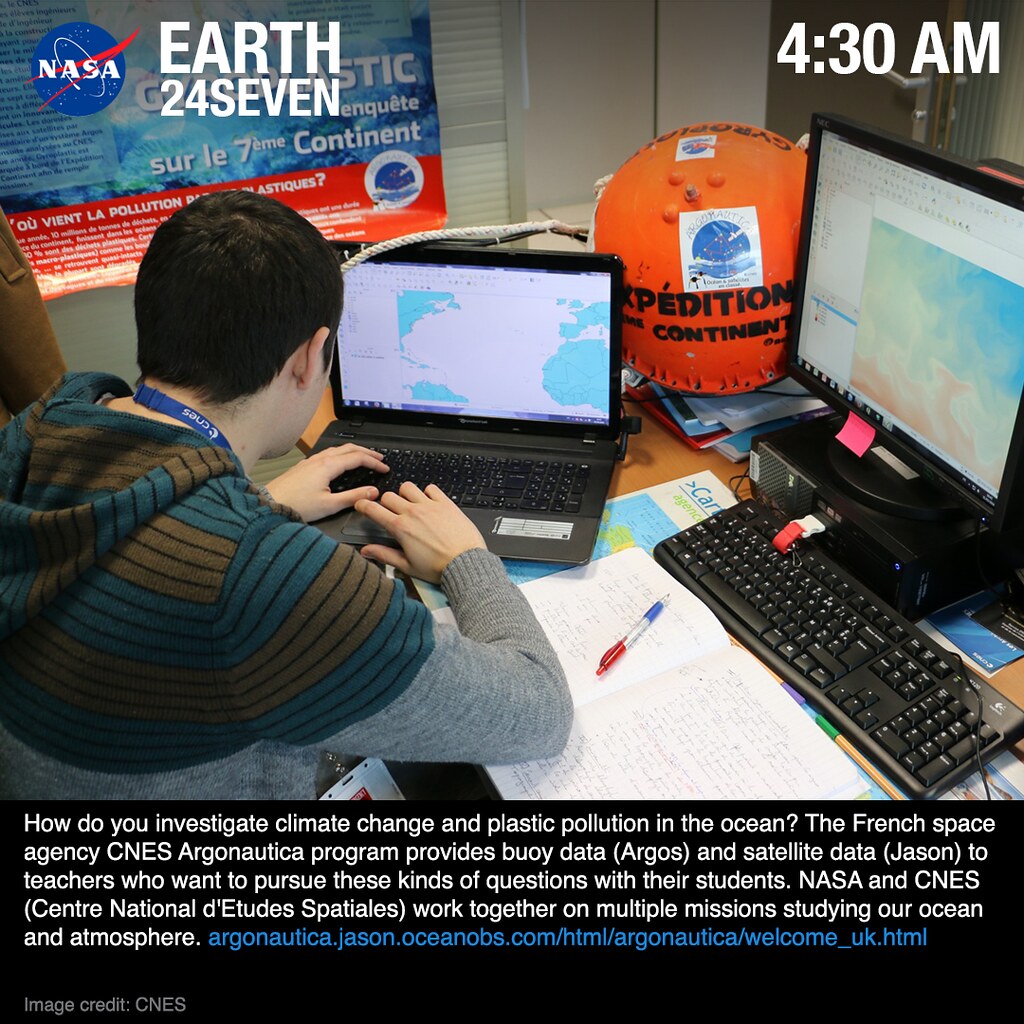Welcome to DU!
The truly grassroots left-of-center political community where regular people, not algorithms, drive the discussions and set the standards.
Join the community:
Create a free account
Support DU (and get rid of ads!):
Become a Star Member
Latest Breaking News
General Discussion
The DU Lounge
All Forums
Issue Forums
Culture Forums
Alliance Forums
Region Forums
Support Forums
Help & Search
LongTomH
LongTomH's Journal
LongTomH's Journal
April 22, 2016
...............//snip
Some of the first images from NASA's 24/Seven Earth Day Celebration:




NASA Marks Earth Day With #24/7 Celebration
Join NASA for a #24Seven Celebration of Earth Day:On April 22, NASA will post about 200 images across nearly 100 different social media channels that capture the breadth of the agency’s 24-hour-a-day work to study Earth. The images were captured during the week of March 27, but have been assembled chronologically to tell a story of a “day in the life” of NASA’s Earth science work. The time-stamped posts -- hashtagged #24Seven -- will begin publishing at 12:01 a.m. EDT and will continue throughout the day.
Share your posts on Twitter or Instagram with the hashtag #24Seven, or on our Facebook Event page.We know we aren’t the only people working to safeguard and understand our home planet. As you celebrate Earth Day, we’re asking you to share on social media what you’re doing to mark the day and celebrate our fragile home in space.
Share your posts on Twitter or Instagram with the hashtag #24Seven, or on our Facebook Event page.
Share your posts on Twitter or Instagram with the hashtag #24Seven, or on our Facebook Event page.
...............//snip
How can I take part?
Millions of people will take time out of their day this April 22 to do their part to make Earth a better place. Others will mark the day by spending it outside, celebrating the beauty, ruggedness and life-giving elements that make Earth our home in the solar system.
Take a picture or a short video of whatever Earth-focused activity you are doing on Earth Day and post it on social media with the hashtag #24Seven. Pictures and videos can be posted to Twitter, Instagram and to the official NASA Facebook Event page.
Begin posting at 6 a.m. EDT on April 21 – which marks the beginning of Earth Day on the international date line at Samoa and Christmas Island, Kiribati – and continue posting until 8 a.m. EDT on April 23, which marks the end of Earth Day on the other side of the international date line at Baker Island.
Millions of people will take time out of their day this April 22 to do their part to make Earth a better place. Others will mark the day by spending it outside, celebrating the beauty, ruggedness and life-giving elements that make Earth our home in the solar system.
Take a picture or a short video of whatever Earth-focused activity you are doing on Earth Day and post it on social media with the hashtag #24Seven. Pictures and videos can be posted to Twitter, Instagram and to the official NASA Facebook Event page.
Begin posting at 6 a.m. EDT on April 21 – which marks the beginning of Earth Day on the international date line at Samoa and Christmas Island, Kiribati – and continue posting until 8 a.m. EDT on April 23, which marks the end of Earth Day on the other side of the international date line at Baker Island.
Some of the first images from NASA's 24/Seven Earth Day Celebration:




April 8, 2016
Adam, and others, are already thinking about how a future probe might reach Tellisto and set up orbit around it.
The article discusses various means of propulsion, including ion engines powered by advanced forms of nuclear reactors and various sails: lightsails, 'e-sails' and magsails. I'm disappointed that Adam didn't include the VASIMR (Variable Specific Impulse Magnetoplasma Rocket engine), which might have advantages over ion engines.
Adam suggests the proposed Telisto probe use a aerobraking to slow enough to enter orbit around the planet.
Voyage to Planet Nine
The Centauri Dreams blog can be a fun place to visit; subject range from planetary science to Search for Extra-Terrestrial Intelligence to interstellar travel. Their most recent post is speculation on missions to the hypothetical 'Planet Nine' way out in the 'burbs of the solar system. The author, Adam Crowl is a member of the Icarus Interstellar project to redesign the Daedalus interstellar probe, proposed by the British Interplanetary Society in the late '70s.
In The Snowbank Orbit, Redux, Adam speculates about the hypothetical planet and how a future mission might not only reach the planet, but go into orbit around it:
Fritz Leiber is better known for his fantasy and SF-fantasy, but he could write hard-SF too. A fine example is his 1962 story, “The Snowbank Orbit”, the title of which alludes to World War II tales of pilots surviving bailouts without parachutes by plunging into snow-drifts. Five spacecraft, racing towards Uranus at 100 miles per second with empty tanks, intend a fiery plunge through the planet’s atmosphere to brake into orbit. The rest of that story I will leave to the interested reader (available here) but the idea of aerobraking into orbit around a distant Planet Nine is worth discussing.
Presently we know very little about Telisto – the mellifluous name suggested for Planet Nine by physicist Lorenzo Iorio [1] which I’ll use for convenience. Brown & Batygin [2] suggest an orbit averaging about 700 AU and a mass of at least 10 Earth masses. The mass could be somewhat higher, though certainly not of the order of a Saturn-mass as its infra-red glow would’ve been seen by earlier surveys. Modelling [3] suggests a 10 Earth-mass planet, with a substantial hydrogen-helium envelope, could be as ‘warm’ as 50 K – about 40 degrees warmer than the ~10 K from sunlight alone. A range of compositions were modelled. A Super-Earth, an Ice-Giant (like Uranus/Neptune) and a miniature version of Jupiter/Saturn are all possible. Some cosmogonic simulations [4] suggest a Neptune like object is likely to have been flung from amongst the other giant planets during their formation, so it seems the most likely option.
A Neptune-like Telisto would then be an ice-wrapped rocky core wrapped in a layer of captured hydrogen/helium mixture. It’s likely that hydrogen will be depleted from its atmosphere by some fraction being chemically bound and mixed with its core, so helium will be a higher fraction of the atmosphere, as appears to be the case for Neptune. If the atmosphere is a small fraction of Telisto’s mass, then it’s possible it will have an icy surface or even a liquid water ocean under a hydrogen atmosphere via its greenhouse effect trapping the planet’s internal heat. In that case Telisto will be very interesting from an astrobiological perspective, though the energy sources available to sustain life are impossible to quantify at present.
Adam, and others, are already thinking about how a future probe might reach Tellisto and set up orbit around it.
Deep Space Propulsion
Given sufficient motivation we’ll send a probe and eventually follow in person. Getting there will be a challenge. At the present 3.5 AU/year of “Voyager 1” the journey would take 200 years. Leiber’s 100 miles per second would get a probe there in 20 years, which might be acceptable if the probe has a compelling secondary mission it can pursue during the long cruise phase. Long baseline telescopic observations might be sufficiently attractive to combine the two. A flyby at 100 miles per second is probably too quick to provide sufficient science return for the investment, so stopping will be required.
Given sufficient motivation we’ll send a probe and eventually follow in person. Getting there will be a challenge. At the present 3.5 AU/year of “Voyager 1” the journey would take 200 years. Leiber’s 100 miles per second would get a probe there in 20 years, which might be acceptable if the probe has a compelling secondary mission it can pursue during the long cruise phase. Long baseline telescopic observations might be sufficiently attractive to combine the two. A flyby at 100 miles per second is probably too quick to provide sufficient science return for the investment, so stopping will be required.
The article discusses various means of propulsion, including ion engines powered by advanced forms of nuclear reactors and various sails: lightsails, 'e-sails' and magsails. I'm disappointed that Adam didn't include the VASIMR (Variable Specific Impulse Magnetoplasma Rocket engine), which might have advantages over ion engines.
Adam suggests the proposed Telisto probe use a aerobraking to slow enough to enter orbit around the planet.
April 6, 2016
Neil Young: Rockin' in the Free World:
Power to the People
Please add your your choices.......
Let's start a Bernie Playlist in celebration of Victory!!!!!
I've been hearing these tunes at Bernie Rallies ever since Iowa:
Muse: Uprising
Neil Young: Rockin' in the Free World:
Power to the People
Please add your your choices.......
Profile Information
Member since: Wed Oct 13, 2004, 05:42 PMNumber of posts: 8,636